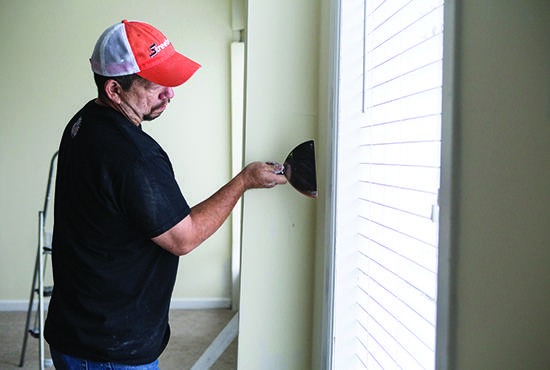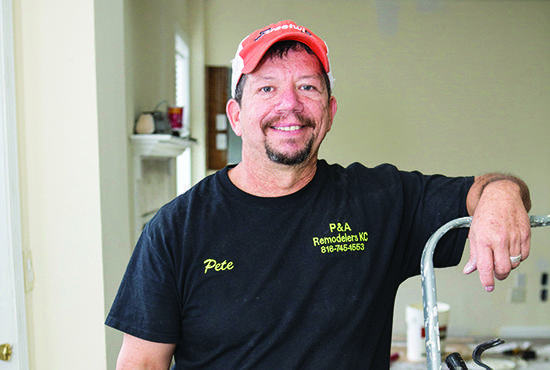The housing bubble was as much about an oversupply as it was about bad finance.
Developers built many homes on speculation, spurred by a financial market that was more than willing to finance buyers who couldn’t afford the mortgages.
When the bubble popped, helping usher in the Great Recession, not only were there thousands of unsold new single-family homes, but from 2004 to 2014, more than 9.3 million people lost their home to foreclosure, surrendered their home to a lender or sold their home via distress sale, the Wall Street Journal reported.
Today, the glut of foreclosures and unsold new homes on the market is gone—the inventory of vacant properties normalizing in 2012. Now the market has been headed in the other direction, with more homes being sold than built.
Although residential investment was the fastest growing component of GDP from 2014 to 2016, those gains had turned to losses by mid-2016.

The current housing market
Jordan Rappaport, a senior economist with the Federal Reserve Bank of Kansas City, says despite the decline in residential investment in 2016, demand for housing remained strong, and by the third quarter of 2016, investment had improved.
Specifically, construction of single-family homes surged 20 percent in September and October, most likely spurred by higher sale prices, Rappaport said.
Real estate association sales data show sales of existing homes rose in October for the second straight month, peaking to the highest annualized pace in nearly a decade. In October, the average single-family home in the United States sold for $232,200, up 6 percent from the same time last year. The median sale price for new houses in the United States was $304,500 and the average sale price was $354,900.
Mark Huggins, president, Payne and Brockway, PA, a civil engineering, land planning and land surveying firm in the Kansas City area, says he has seen positive signs in the single-family home construction market.
Huggins points to two new subdivisions in the southern Kansas City metro area, each with more than 150 homes, where most of the lots are already sold.
“There is a fairly strong demand for new homes, with people waiting in line,” he said.
Huggins, however, says the market for new construction is much different and more challenging than the housing boom period of more than a decade ago. Builders and developers face new regulations and controls on construction and tighter credit conditions.
At the same time, the number of qualified single-family residential developers has declined, with the crisis weeding people out of the industry and others deciding to retire or do something else.
“There are developers who are working—the ones who survived the downturn—but there aren’t as many of those guys around anymore,” Huggins said. “A lot of guys who secured financing for their developments but didn’t have the backing found themselves in a lot of trouble.”
Labor data show construction industry employment, including residential and nonresidential, fell 6,000 in April 2016, 16,000 in May and showed no growth in June. The labor losses highlight some of the overall cautiousness in the construction industry.
“Developers don’t want to get themselves overextended and neither do the banks,” Huggins said. “No one wants to repeat what happened.”
According to 2015 year-end banking data, consumer lending standards remained tight—particularly in mortgage lending, which was 67 percent of all consumer debt in 2015.
Banking analysts believed mortgage lending would remain tight and it would be a drag on economic growth in the United States throughout 2016.
Tightening can be seen in the average FICO score required among private lenders—rising from 720 pre-crisis to 750 in 2015. The average FICO score for Federal Housing Administration loans increased from 682 in 2014 to 689 in 2015. Rappaport says, however, FICO scores can be misleading, especially when assessing mortgage lending. Credit has become more widely available, including mortgages with low down payments, to borrowers who have a documented steady income, even if they have some credit blemishes, he added.
The main problems for buyers are supply and affordability.
Pete Martinez says that’s why many people have turned to the home improvement industry, which accounted for 32 percent of residential investment from 2013 to 2016.

More than home improvement
Martinez’s father started P&A Remodelers in 1973, and Pete branched out three years ago, forming P&A Remodelers of KC. Martinez’s father learned from his father.
“It’s a generational, family business with more than 40 years of experience,” he said.
Martinez says he has seen a surge in the remodeling industry the last few years. Many of his customers can’t find a new home that either is within their desired location or meets their needs for square footage and layout.
So, instead of building a new house to their specifications—which often they can’t afford or land is unavailable in their desired location—they remodel their existing home. Others just want to downsize—they’ve reached retirement age, their children are grown and they don’t need as much space.
“They’re updating their house to get it ready to sell,” Martinez said.
Most notably, he has seen a change in his clients’ age—many are millennials in their 30s, who have started families, are established in their careers and want to form roots in a community.
“They’re looking for a particular house within a particular area, whether it’s a school district, commuting to work or lifestyle—close to parks, shops and entertainment,” Martinez said. “Many times they can’t find it with new construction so they’re buying homes and making them into what they want.”
Most remodels involve kitchens and bathrooms, but more recently Martinez says clients want to take existing older homes with separate, small living spaces and open them up.
“The trend is open floor concept, where kitchen and living space merge to create one large space,” he said.
Remodeling an existing home can be expensive and time consuming, but it’s about meeting clients’ needs and wishes, and it’s still cheaper than buying a new home. Besides expensive kitchen remodels—which Martinez says can average between $15,000 to $30,000 depending on materials and size—clients want modern amenities, such as technology.
Older homes were built around the telephone and sometimes cable television. Today, Martinez installs state-of-the-art devices, such as home control stations, surround sound, Wi-Fi, electrical sockets with USB charging ports and other tech-savvy devices.
“They want all the comforts of a 21st century home,” Martinez said.
Some even want specialized flooring, such as tile that depicts a sandy beach or a lush forest.
Although data show the remodeling industry declined in 2016, Rappaport says both before and after the housing crisis, spending on residential improvements is a source of considerable underlying strength in the economy.
That’s why Martinez doesn’t see his business decreasing anytime soon.
“There’re not enough homes to fit everyone’s needs right now,” he said. “So we’re helping clients fit those needs into existing homes.”
The long-term outlook
The spike in new single-family construction in the third and fourth quarters and other positive variables in 2106 may propel residential investment in 2017; however, the market faces several constraints.
“Numerous anecdotes suggest that the main constraint is a limited supply of undeveloped land in desirable locations,”
Rappaport said. “In particular, suburbanization may have reached its geographic limit in many metro areas.”
If this summation is correct, Rappaport says, homes will be built closer to metro centers rather than in suburbs. Residential construction in urban settings faces considerable challenges, including land-use restrictions, dispersed locations and the expense of tearing down existing homes.
A single-family home typically takes about six months to build, and depending on when the buyer closes on the property, this could put more downward pressure on investment.
Rappaport also points out that building permits for single-family homes—which he says are a more forward-looking and better-measured indicator of construction—had sharply lagged starts in the first half of 2016; however, they had increased modestly in the second half of the year.
Multifamily construction, which saw housing starts peak in mid-2015, has slowed down. Rappaport says multifamily is likely to flatten in 2017, which is a welcome development in the face of possible overbuilding. Another constraint is brokers’ commissions, which accounted for 22 percent of residential investment in 2016. Commissions are the most volatile component of residential investment, making significant positive or negative contributions quarter by quarter, Rappaport said. In the second quarter of 2016, commissions made a moderate positive contribution, partly offsetting the weakness from contractions in single-family construction and home improvements.
Another volatile component is investors, who look for places to earn whatever return on capital they can muster. The low end of the housing market has almost ceased to exist as the investor class has bought homes with the plan to flip them, analysts say. This not only has cut into the supply, but also has taken a particular buying class out of the market.
Despite these varying components, which can contribute to a weak outlook, Rappaport says the construction boost in September and October and a slight increase in November, continued strong consumer demand, increasing sale prices, an increase in housing permits, and the strength of the home improvement sector could be signs that the gray sky is clearing in the housing industry.

Further Resources
Read “The Weak Outlook for Residential Investment” by Jordan Rappaport
